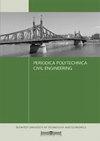土地蒸发量与参考蒸散量差距的扩大意味着匈牙利对干旱的脆弱性增加
IF 1.4
4区 工程技术
Q3 ENGINEERING, CIVIL
引用次数: 0
摘要
2022年欧洲的严重干旱引发了一个问题,即人们是否有足够的知识和工具来预测和预防此类事件。对匈牙利1981年至2020年40年气象资料的分析证实,温度、相对湿度和净辐射有显著的上升趋势,p = 0.05。短波净辐射增加了89.6毫米水当量。土地蒸发量和参考蒸散量的估计值也显示出显著增加的趋势。他们之间的差距正在扩大,匈牙利东北部的趋势尤为明显。需求(参考蒸散)增加2.23±0.3 mm /年,供应(土地蒸发)增加1.64±0.2 mm /年。开放的缺口可以解释为能量分配系统稳定性的下降,其中水是气候能量的主要能量转移媒介。这种变化可能导致干旱的风险增加,这是系统表现不佳的一个症状。气候能源分配过程——一项关键的环境服务——正在转向一个新的操作点,即需要更多的水来运输能源。这些趋势需要过程能力方法。追求用水效率和减少用水不能阻止荒漠化,反之亦然:只有确保有足够的水用于蒸发蒸腾才能消除缺水。这将提高设计和实施各种预防行动的优先级,例如基于自然的解决方案和保水措施。本文章由计算机程序翻译,如有差异,请以英文原文为准。
Widening Gap of Land Evaporation to Reference Evapotranspiration Implies Increasing Vulnerability to Droughts in Hungary
Severe droughts of 2022 in Europe raise the question if one has sufficient knowledge and tools to predict and prevent such events. Analysis of 40 years of meteorological data for Hungary between 1981 and 2020 confirms significant upward trends with p = 0.05 in temperature, relative humidity, and net radiation. Shortwave net radiation has increased by 89.6 mm in water equivalent. Estimates of land evaporation and reference evapotranspiration also show a significantly increasing trend. The gap between them is widening with a significant trend in northeast Hungary. The demand (reference evapotranspiration) is increasing by 2.23 ± 0.3 mm yr–1, while supply (land evaporation) by 1.64 ± 0.2 mm yr–1. The opening gap can be interpreted as a decreasing stability of the energy distribution system, where water is the dominant energy transfer medium for climatic energy. This change could lead to an increased risk of droughts, a symptom of system underperformance. The climatic energy distribution process – a key environmental service - is shifting to a new operating point where more water would be needed to transport energy. These trends call for a process capability approach. Desertification cannot be stopped by chasing water use efficiency and using less water, but vice versa: water scarcity can only be eliminated by ensuring that there is sufficient water available for evapotranspiration. This will raise the priority for initiatives to design and implement a wide range of preventing actions, such as nature-based solutions and water retention measures.
求助全文
通过发布文献求助,成功后即可免费获取论文全文。
去求助
来源期刊

Periodica Polytechnica-Civil Engineering
工程技术-工程:土木
CiteScore
3.40
自引率
16.70%
发文量
89
审稿时长
12 months
期刊介绍:
Periodica Polytechnica Civil Engineering is a peer reviewed scientific journal published by the Faculty of Civil Engineering of the Budapest University of Technology and Economics. It was founded in 1957. Publication frequency: quarterly.
Periodica Polytechnica Civil Engineering publishes both research and application oriented papers, in the area of civil engineering.
The main scope of the journal is to publish original research articles in the wide field of civil engineering, including geodesy and surveying, construction materials and engineering geology, photogrammetry and geoinformatics, geotechnics, structural engineering, architectural engineering, structural mechanics, highway and railway engineering, hydraulic and water resources engineering, sanitary and environmental engineering, engineering optimisation and history of civil engineering. The journal is abstracted by several international databases, see the main page.
 求助内容:
求助内容: 应助结果提醒方式:
应助结果提醒方式:


